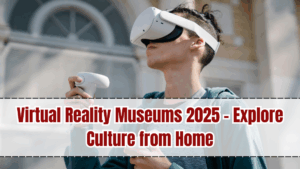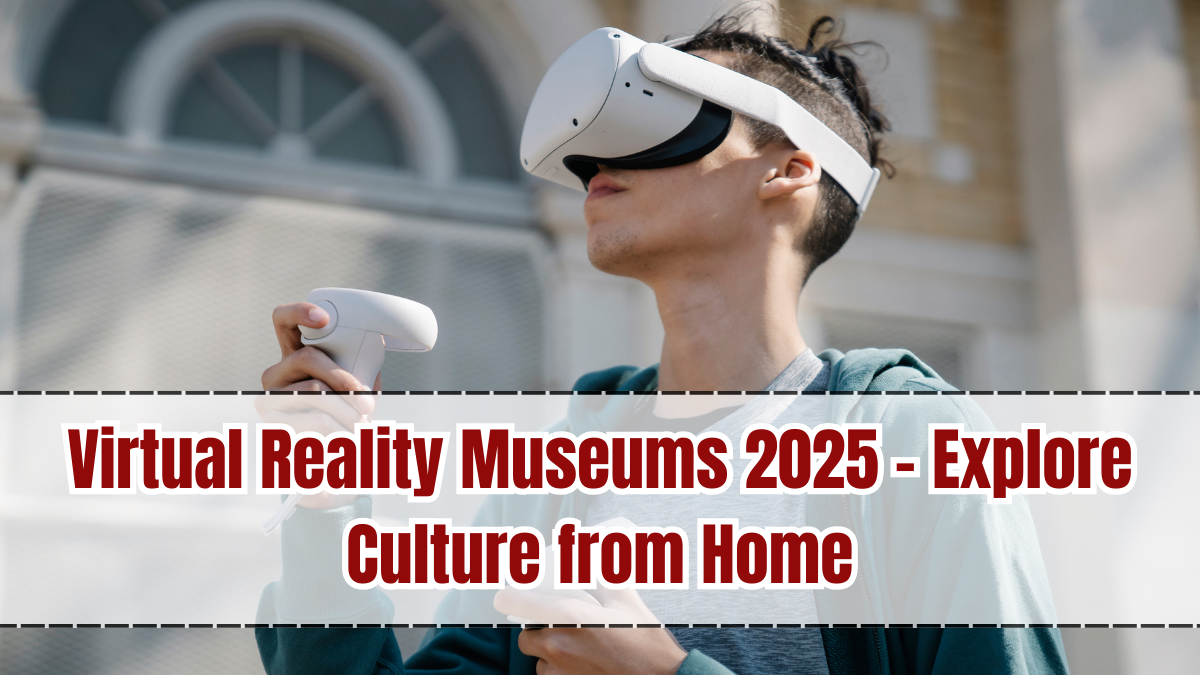Museums have always been gateways to history, art, and culture. Yet, not everyone has the opportunity to visit them due to distance, cost, or accessibility barriers. In 2025, Virtual Reality Museums are transforming cultural experiences by bringing entire collections into people’s homes. Through immersive VR technology, visitors can walk through galleries, admire artifacts, and even interact with exhibits — all without leaving their living room. This digital shift is redefining how we experience culture, making it more inclusive and interactive than ever.

What are Virtual Reality Museums?
A Virtual Reality Museum is a digital platform that uses VR headsets or mobile apps to replicate real museums or create entirely new digital galleries. Unlike simple online photos, VR museums allow full immersion, where users can move through halls, zoom into paintings, and listen to audio guides.
Key features include:
-
360-degree virtual tours of world-class museums.
-
Interactive 3D models of artifacts and historical objects.
-
Multilingual audio guides and AI narrators.
-
Virtual events, workshops, and live-streamed exhibitions.
-
Accessibility across devices, from VR headsets to smartphones.
Why They Matter in 2025
The rise of Virtual Reality Museums 2025 reflects a growing need for cultural accessibility. Many people cannot travel to Paris, London, or New York to see world-famous collections, but VR museums allow anyone, anywhere, to explore them. They also provide inclusivity for those with disabilities, ensuring cultural experiences are not restricted by physical limitations. Furthermore, they support education by offering interactive classrooms where students can study history and art firsthand in a virtual space.
Benefits of Virtual Reality Museums
The adoption of VR in cultural preservation and education is creating powerful benefits:
-
Global Access: Anyone can visit iconic museums regardless of geography.
-
Cost Savings: No travel or expensive tickets required.
-
Interactive Learning: Students and researchers gain deeper understanding of history and art.
-
Preservation: Rare artifacts can be digitally preserved for future generations.
-
Inclusivity: People with mobility challenges can explore culture equally.
Role of Technology
Advanced technology powers the VR museum experience. High-resolution 3D scanning creates detailed replicas of real artifacts. Artificial intelligence enhances visitor engagement by acting as virtual guides that answer questions in real time. Cloud computing makes these massive collections accessible worldwide, while haptic feedback devices are beginning to simulate touch, allowing users to “feel” textures virtually. Together, these innovations make the VR museum experience almost indistinguishable from physical visits.
Government and Institutional Initiatives
Governments, cultural institutions, and private tech companies are working hand-in-hand to expand VR museums. UNESCO and other cultural bodies are supporting projects that digitize heritage sites. Leading museums such as the Louvre, British Museum, and Smithsonian are already offering immersive VR tours. At the same time, EdTech platforms are integrating VR museums into school curriculums, ensuring students learn about history and culture in a highly engaging way. These initiatives ensure that art and culture are preserved while becoming more widely accessible.
Future of VR Museums
The future of Virtual Reality Museums is set to become even more exciting. By 2030, VR will likely merge with augmented reality (AR), creating hybrid cultural experiences where digital and physical exhibits blend seamlessly. Artificial intelligence will personalize museum tours for each visitor, curating collections based on individual interests. Multi-user VR spaces will allow friends and families to attend exhibitions together virtually, no matter where they are in the world. This promises a future where cultural exploration becomes limitless and deeply personal.
Conclusion
Virtual Reality Museums 2025 are not replacing physical museums but complementing them, ensuring culture reaches every corner of society. They democratize access to history, art, and heritage while supporting education and preservation. By combining immersive technology with global accessibility, VR museums are proving that the wonders of culture no longer belong only to those who can travel — they belong to everyone. The digital revolution in culture is here, and it is reshaping how humanity connects with its past and future.
FAQs
What are Virtual Reality Museums 2025?
They are digital platforms that use VR technology to provide immersive cultural experiences, allowing people to explore museums from anywhere.
How do VR museums benefit students?
They offer interactive and engaging learning experiences, bringing history, art, and culture directly into virtual classrooms.
Are VR museums replacing real museums?
No, they complement physical museums by expanding access and preserving artifacts digitally.
What technology powers VR museums?
They use 3D scanning, artificial intelligence, cloud computing, and VR headsets to create immersive experiences.
What is the future of Virtual Reality Museums?
Future VR museums will blend with augmented reality, offer personalized tours, and allow collaborative virtual visits across the globe.
Click here to know more.
